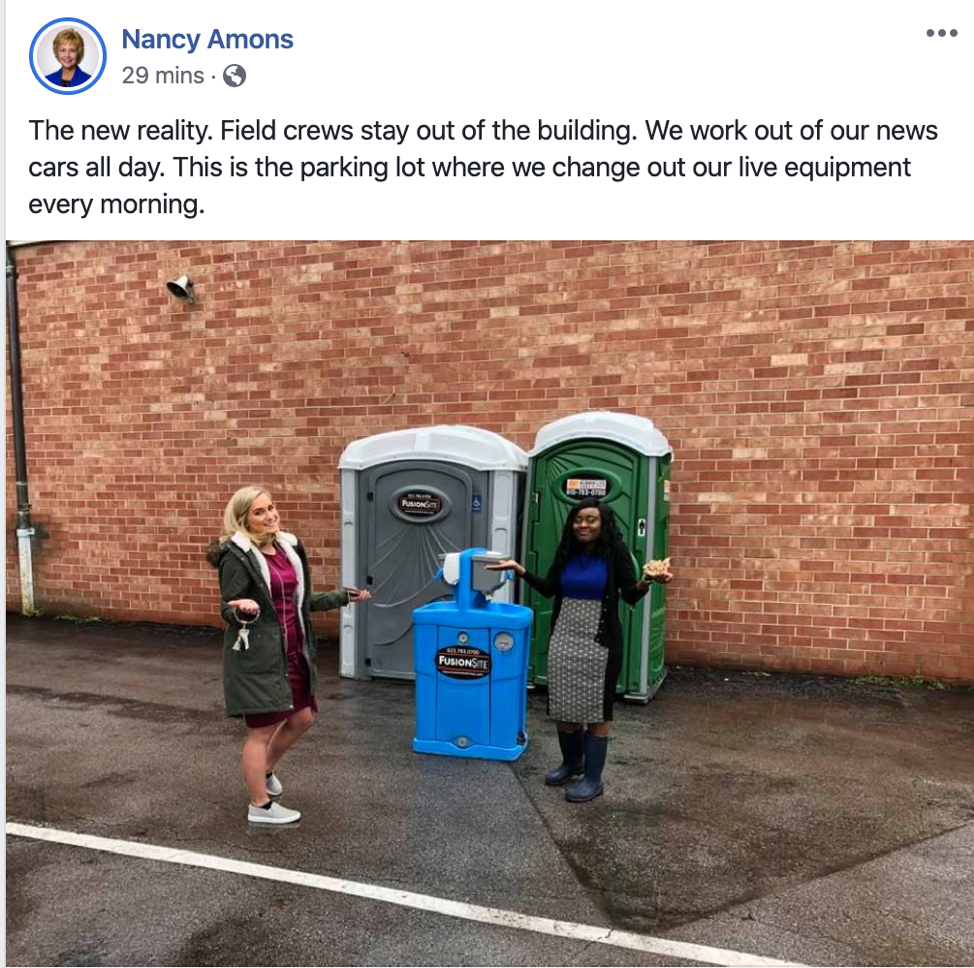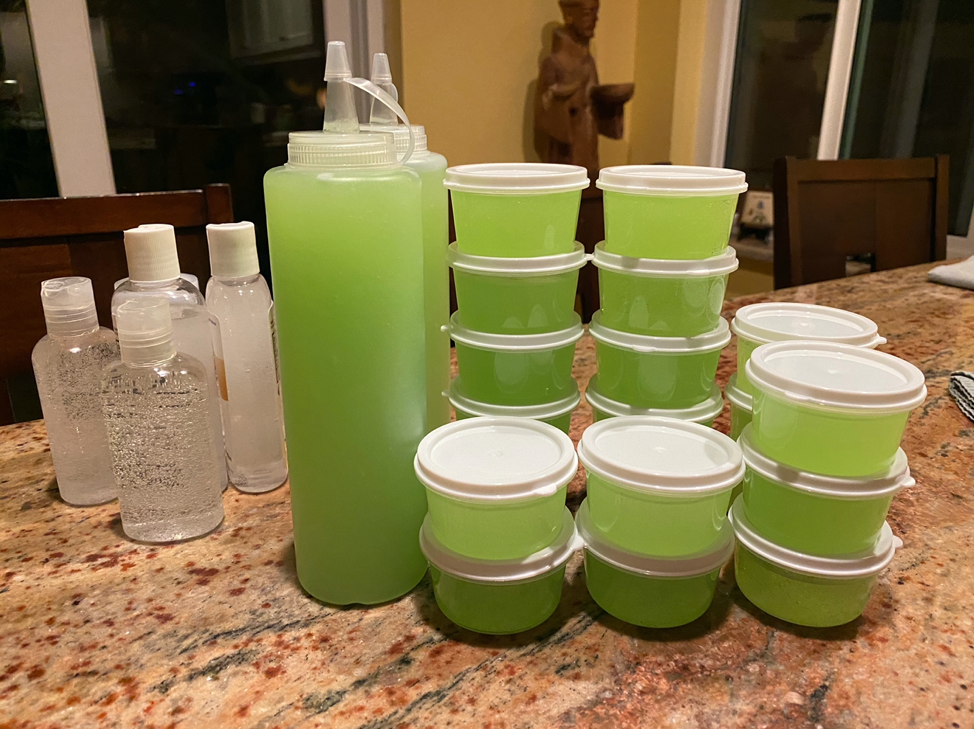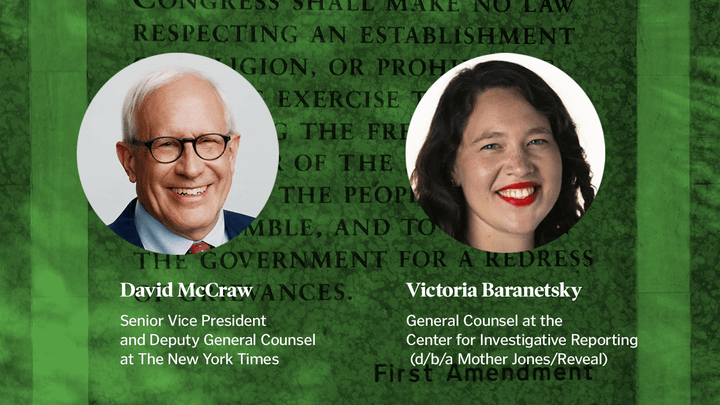 Covering COVID-19 is a daily Poynter briefing about journalism and coronavirus, written by senior faculty Al Tompkins. Sign up here to have it delivered to your inbox every weekday morning.
Covering COVID-19 is a daily Poynter briefing about journalism and coronavirus, written by senior faculty Al Tompkins. Sign up here to have it delivered to your inbox every weekday morning.
Younger demographics shouldn’t underestimate their coronavirus risks
This week we learned that the virus is affecting a surprising number of younger people.
In the United States, of the first 2,500 cases detected, more than 700 of them were people from 20 to 44 years old. New data from the Centers for Disease Control and Prevention showed that nearly 40% of U.S. patients who were sick enough to be hospitalized were aged 20 to 54.
PolitiFact and MediaWise, Poynter’s fact-checking program that focuses on social media, are combining debunking forces to create a Monday-to-Friday email about fact-checking the coronavirus. If you want the latest facts about the coronavirus in your inbox each day, sign up here.
I strongly recommend that all newsrooms take a look at this work by my MediaWise colleagues. They have organized dozens of teenage fact-checkers who are producing tons of reliable, documented material that will speak to the media tastes of younger news consumers.
It is critical that you find the right voice and media to reach these audiences right now because, believe me, the liars and scammers know how to find them and feed them unreliable information that will put them (and the rest of us) at risk.
Here are 1,000+ COVID-19 fact-checks
Poynter published an invaluable asset for journalists and citizens alike: a soon-to-be-searchable database of the 1,000+ coronavirus fact-checks produced by the International Fact-Checking Network-led Coronavirus Facts Alliance.
The database unites more than 100 fact-checkers in 45 countries and includes articles published in at least 15 languages. The alliance was launched on Jan. 24 to combat coronavirus misinformation worldwide. This database will be continuously updated to include new fact checks.
My IFCN colleagues here at Poynter explained to me that it is important that U.S. journalists to pay attention to the international fact-checking community because Asia and Europe are a couple of weeks ahead of America’s experience with the coronavirus — so if we can knock down rumors there, they won’t have as much impact when they arrive in the U.S. And they WILL arrive.
 Database functionality will improve in the coming days to include a custom search bar and other features. The database will be updated on a regular basis to capture the alliance’s ongoing work to debunk coronavirus misinformation.
Database functionality will improve in the coming days to include a custom search bar and other features. The database will be updated on a regular basis to capture the alliance’s ongoing work to debunk coronavirus misinformation.
In the U.S., PolitiFact is fact-checking COVID-19 claims
This is going to save you some time trying to knock down the rumors that are heading your way in the next couple of weeks.
While many of you are playing whack-a-mole with coronavirus rumors and claims, my Poynter colleagues at PolitiFact are laser-focused on checking everything from social media posts to what politicians are saying. They look at if we are heading for martial law (probably not), and whether what Biden said about the coronavirus in the debate this week was accurate.
 On the front page now are fact-checks about whether President Donald Trump is planning a two-week national quarantine (false), whether he fired the national Pandemic Response Team (the claim needs context) and other claims that are spreading online.
On the front page now are fact-checks about whether President Donald Trump is planning a two-week national quarantine (false), whether he fired the national Pandemic Response Team (the claim needs context) and other claims that are spreading online.
[the_ad id=”667872″]
Google has a fact-check explorer
Here is one more fact-checking tool for journalists. Google has created the Google Fact-Checking Explorer, which searches known fact-checking sites and helps you quickly find out whether they have looked into whatever rumor or statement you want to check out. It might save you from having to spend time researching what they have already documented. Keep in mind, of course, that you are still responsible for the accuracy of what you report.
Jails are releasing prisoners
In Hillsborough County, Florida, the sheriff released 164 people from jail to lower the risk of the coronavirus spreading there. All of the people who were released faced low-level charges. Jails and prisons nationwide worry that the virus will leave them short-staffed. You can count on many jails nationwide taking the steps the Hillsborough lockup did. Even Iran took similar steps a couple of weeks ago.
The new newsroom reality
My friend Nancy Amons at WSMV in Nashville posted a photo of wash and relief facilities for crews who now stay in the field all day and do not come inside. The station has also started sending newscast producers home to produce whole newscasts remotely.
 TV news anchors around the country are doing their work from home. In St. Louis, KSDK anchor Anne Allred, who received a life-saving kidney transplant three years ago, is anchoring the newscast from her basement.
TV news anchors around the country are doing their work from home. In St. Louis, KSDK anchor Anne Allred, who received a life-saving kidney transplant three years ago, is anchoring the newscast from her basement.
In Ecuador, Alfonso Espinosa de los Monteros, the man who holds the Guinness World Records title of “longest career as a television news broadcaster,” is anchoring his Ecuavisa broadcast from home. On Twitter, he said he is following the government’s request to stay home because of the threat of the coronavirus.
 He has been on the air since 1962 and on Ecuavisa since 1967.
He has been on the air since 1962 and on Ecuavisa since 1967.
Not all hand sanitizers work
If the hand sanitizer you are using does not contain at least a 60% concentration of alcohol, there is a decent chance it is not effective at killing the coronavirus. Some popular brands don’t include alcohol at all.
Alcohol starts a process called “denaturation,” which modifies the structure of a protein. Bacteria and viruses both contain proteins, which alcohol interrupts, causing them to break down or stick together. Viruses, like the coronavirus, have a wrapping called an envelope that alcohol can break down, though not all virus walls react the same.
Keep two things in mind. To properly use hand sanitizer, you should not just use a few drops. You have to cover your hands in the stuff, just like washing your hands with soap. And if your hands are dirty, the sanitizer won’t work very well.
Let’s be clear, the experts would rather you just use soap and water to wash your hands over using sanitizer whenever possible.
I used this recipe to make my own hand-sanitizer after local stores ran out. It is one cup of 91% rubbing alcohol and one-third cup of aloe. You have Purell. I have my concoction, which I call “Pure Al.” Mine has a MUCH stronger alcohol smell than the commercial products, but the alcohol evaporates pretty quickly. If it were 100% alcohol, it would evaporate too fast and dry out your skin, chemistry experts say.
Since we live in Florida, I had no trouble finding aloe, which Floridians use for sunburn relief, in our closet. And it seems like we have been stocking up on 91% rubbing alcohol at my house for some time for reasons I do not know.
The CDC only recommends alcohol-based hand sanitizers, meaning kid-friendly, alcohol-free and botanical sanitizers won’t protect you, but they might be better than nothing.
Jeffrey Gardner, an associate professor of biological sciences at the University of Maryland, said he is not a fan of most homemade sanitizers. Some do-it-yourselfers are using vodka, he said, but even 80 proof vodka is only 40% alcohol, which is not enough of a concentration to break down virus walls.
[the_ad id=”667878″]
Fighting addiction while isolated
Chuck Ringwalt at Spectrum News Ohio shared a story we talked about here a few days ago, about how people with addictions are finding new ways to attend 12-step meetings. By the way, this story was captured using an iPhone.
Great stuff to do while you are stuck at home
Just because you are stuck at home does not mean you are barred from strolling through some of the world’s most fabulous sites, experiencing the best music and art or watching movies with friends.
For starters, watch Netflix movies with friends and host a running commentary with “Netflix Party.” Everybody who is joining the party has to have Netflix, but it syncs up your viewing so it is like being in the same room and watching the same screen.
“After installing the Chrome extension, navigate over to Netflix, pick what you want to play, and then hit the Chrome extension,” Polygon explains. “You’ll be prompted to share the link with others. There’s a built-in group chat, but no option for audio or video chatting, keeping the cinematic experience pure and quiet.”
If you want to listen to music together, this might be a better option.
Want to visit the world outside without going there?
Take a virtual walk through the Redwood National Forest.
Take a virtual tour of the Great Wall of China.
Tour the Vatican.
Take a trip to and into the Statue of Liberty.
Take a virtual walk through the Guggenheim Museum. How about that culture. The Google Arts & Culture site has an awesome interactive timeline that lets you explore by continent, or you can hang out with Monet, Cézanne, and Gauguin this weekend at the Musée d’Orsay in Paris.
How about upping your arts literacy and attending the free nightly Metropolitan Opera performances streaming during this coronavirus interruption?
“These free streams will present encores of past performances from its famed Live in HD series,” Operawire reported. “The encore presentations will begin at 7:30 p.m. EST each night on the company’s official website and will then be available for an additional 20 hours thereafter. Each showcase will also be viewable on the Met Opera on-demand apps.”
Here’s the schedule:
- Friday, March 20 – Donizetti’s “La Fille du Régiment”
- Saturday, March 21 – Donizetti’s “Lucia di Lammermoor”
- Sunday, March 22 – Tchaikovsky’s “Eugene Onegin”
The Berlin Philharmonic also opened its digital concert hall for free.
YouTube Live, Pitchfork TV and LiveStream all have free concerts online and their offerings are growing during this shutdown.
The Associated Press’ coronavirus guide
News nerds are going to love this new Associated Press topical style guide for covering the coronavirus.
Issue one is “what to call it?” The AP advises:
As of March 2020, referring to simply the coronavirus is acceptable on first reference in stories about COVID-19. While the phrasing incorrectly implies there is only one coronavirus, it is clear in this context. Also acceptable on first reference: the new coronavirus; the new virus; COVID-19.
In stories, do not refer simply to coronavirus without the article the. Not: She is concerned about coronavirus. Omitting the is acceptable in headlines and in uses such as: He said coronavirus concerns are increasing.
The other day I asked an editor why the CDC is not the “CDCP,” since it is now officially known as the Centers for Disease Control and Prevention. The answer was something like, “because it is not,” which I found to be a structured but still unsatisfying answer.
You will also learn the difference between an epidemic and pandemic, the difference between “relative risk” and “absolute risk,” and that the words “social distancing” do not need quotation marks unless you use them as I just did.
A warning: If you are working at home it might be best not to try to share these with your loved ones because they will likely not appreciate them as much as you and me.
NAHJ and AAJA condemn President Trump’s phrase ‘Chinese Virus’
The National Association of Hispanic Journalists joined the Asian American Journalists Association in condemning President Trump’s use of the phrase “Chinese Virus.” NAHJ posted in a statement:
The National Association of Hispanic Journalists (NAHJ) condemns the use of “Chinese Virus” to refer to COVID-19 or Coronavirus.
The global virus has been recently called various names such as the “Wuhan Virus,” and “Chinese Flu,” and the public has also witnessed President Donald Trump use the language “Chinese Virus.” According to a tweet by CBS News White House Correspondent, Weijia Jiang, a White House official referred to COVID-19 as the “Kung-Flu.”
This kind of thing has real ramifications. Asian Americans are reporting real incidents of hatred aimed at them over the virus.
By the way, the Spanish flu, which broke out a century ago, probably didn’t start in Spain. That flu infected almost half of the world’s population and killed more people than World War I.
It became known as the Spanish flu because while the U.S. and other media were locked down on what they could report, while Spain, which was neutral in World War I at the time, allowed press reports about the flu. There was a common assumption that since news about the flu was pouring out of Spain, the flu must have started there.
In fact, it may have come from the United States, China, Britain or France. National Geographic said there is compelling evidence that China was its birthplace.
What shoppers did and didn’t take
I love this so much. The Philadelphia Inquirer documented what people did and didn’t take off grocery store shelves. Meat is gone but there are plenty of chicken gizzards. Salads evaporated but there is still plenty of water cress #1, whatever that is.
We’ll be back Monday with a new edition of Covering COVID-19. Sign up here to get it delivered right to your inbox.
Al Tompkins is senior faculty at Poynter. He can be reached at atompkins@poynter.org or on Twitter, @atompkins.









